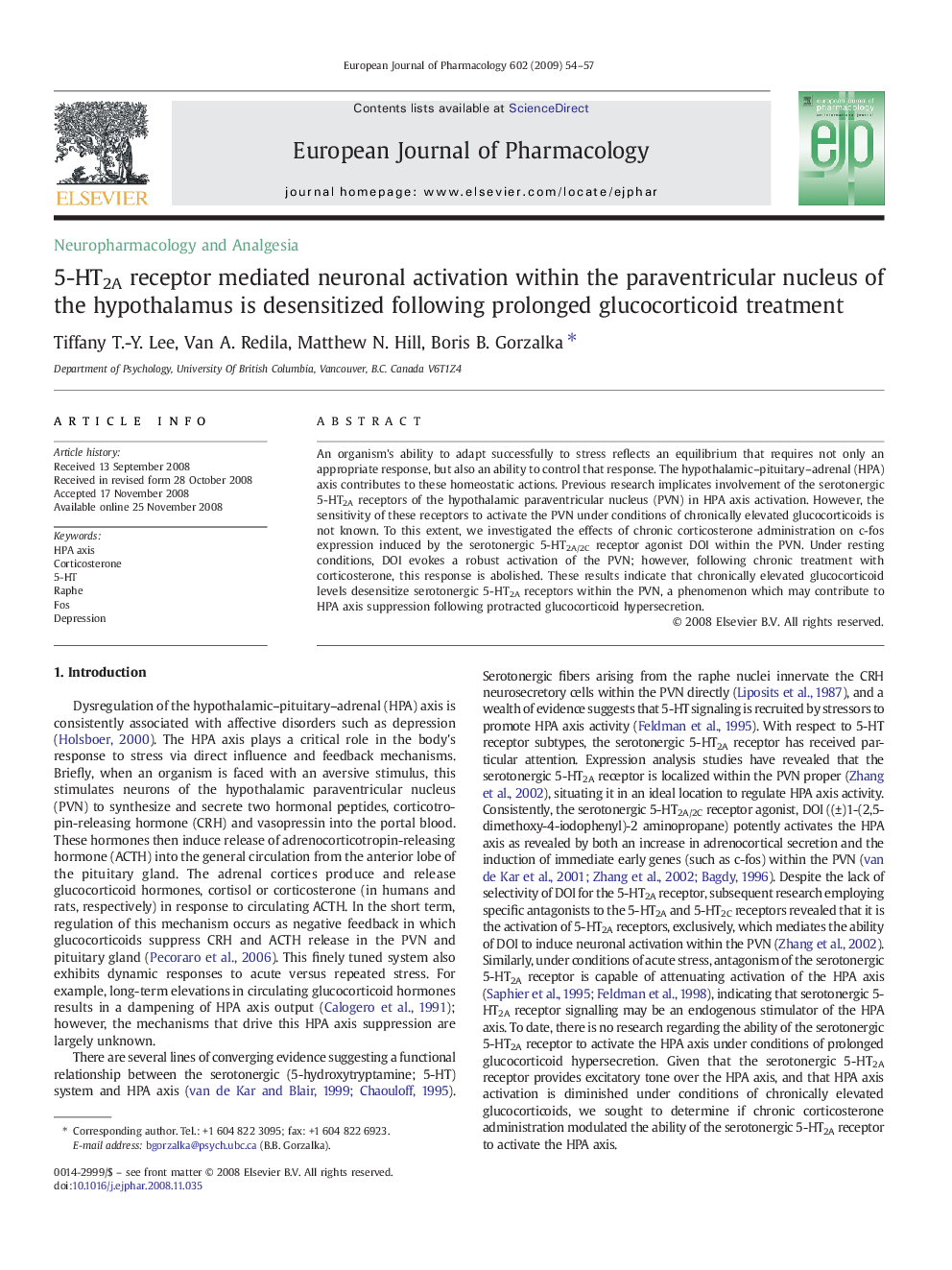| Article ID | Journal | Published Year | Pages | File Type |
|---|---|---|---|---|
| 2534601 | European Journal of Pharmacology | 2009 | 4 Pages |
An organism's ability to adapt successfully to stress reflects an equilibrium that requires not only an appropriate response, but also an ability to control that response. The hypothalamic–pituitary–adrenal (HPA) axis contributes to these homeostatic actions. Previous research implicates involvement of the serotonergic 5-HT2A receptors of the hypothalamic paraventricular nucleus (PVN) in HPA axis activation. However, the sensitivity of these receptors to activate the PVN under conditions of chronically elevated glucocorticoids is not known. To this extent, we investigated the effects of chronic corticosterone administration on c-fos expression induced by the serotonergic 5-HT2A/2C receptor agonist DOI within the PVN. Under resting conditions, DOI evokes a robust activation of the PVN; however, following chronic treatment with corticosterone, this response is abolished. These results indicate that chronically elevated glucocorticoid levels desensitize serotonergic 5-HT2A receptors within the PVN, a phenomenon which may contribute to HPA axis suppression following protracted glucocorticoid hypersecretion.
